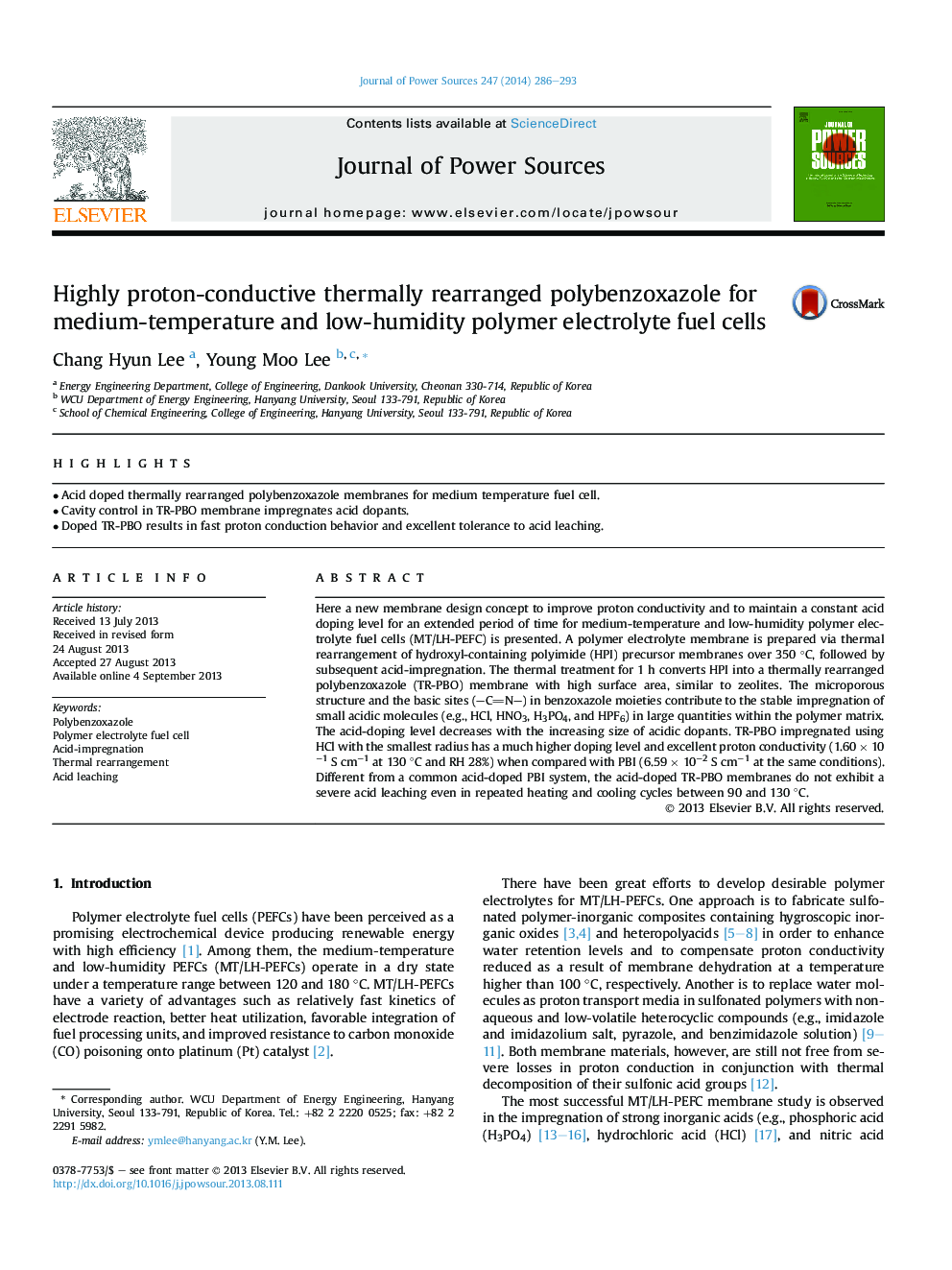| Article ID | Journal | Published Year | Pages | File Type |
|---|---|---|---|---|
| 7738241 | Journal of Power Sources | 2014 | 8 Pages |
Abstract
Here a new membrane design concept to improve proton conductivity and to maintain a constant acid doping level for an extended period of time for medium-temperature and low-humidity polymer electrolyte fuel cells (MT/LH-PEFC) is presented. A polymer electrolyte membrane is prepared via thermal rearrangement of hydroxyl-containing polyimide (HPI) precursor membranes over 350 °C, followed by subsequent acid-impregnation. The thermal treatment for 1 h converts HPI into a thermally rearranged polybenzoxazole (TR-PBO) membrane with high surface area, similar to zeolites. The microporous structure and the basic sites (-CN-) in benzoxazole moieties contribute to the stable impregnation of small acidic molecules (e.g., HCl, HNO3, H3PO4, and HPF6) in large quantities within the polymer matrix. The acid-doping level decreases with the increasing size of acidic dopants. TR-PBO impregnated using HCl with the smallest radius has a much higher doping level and excellent proton conductivity (1.60 Ã 10â1 S cmâ1 at 130 °C and RH 28%) when compared with PBI (6.59 Ã 10â2 S cmâ1 at the same conditions). Different from a common acid-doped PBI system, the acid-doped TR-PBO membranes do not exhibit a severe acid leaching even in repeated heating and cooling cycles between 90 and 130 °C.
Related Topics
Physical Sciences and Engineering
Chemistry
Electrochemistry
Authors
Chang Hyun Lee, Young Moo Lee,
